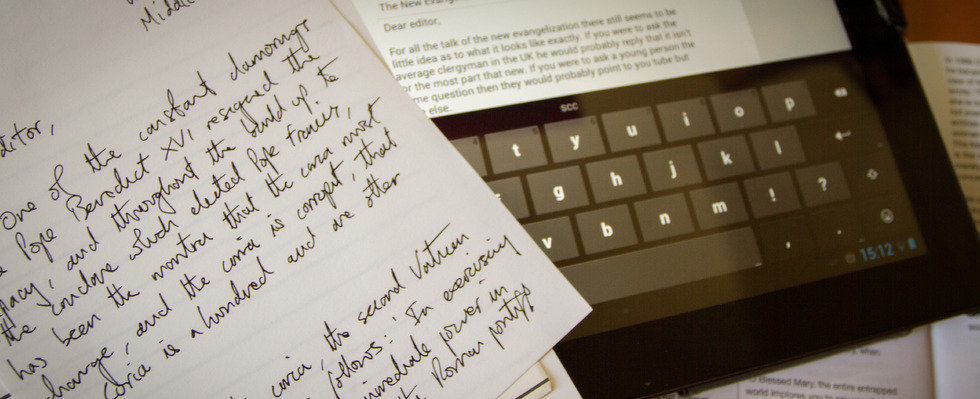Emails to the Editor
Contact: [email protected]
Cosmic Sin
Dear Editor,
Science informs us of the existence of both good and evil, within the Cosmos, long before the emergence of homo-sapiens, on planet Earth, who then committed Original Sin. Since truth cannot contradict truth, the aim of this letter is to also justify, in theological terms, the theory of a transcendental (as opposed to historical) Original Sin.
It is the nature of love for the lover to give himself unconditionally to the beloved. God is infinite love, so in the relationships between the three equal Divine Persons each one gives himself completely to the other two, and receives them in return. Each Person is as nothing and receives fullness of being from the others. The Father generates his Son, the Word, as his other Self – and the infinite dynamic of love between them is the Holy Spirit.
God, as the Three-in-One in the nature of love, gives of the fullness of the Trinity to the nothingness of creation.
The Word is the complete knowledge of the Father and has being as the Second Divine Person, always freely doing the Father’s will in infinite love and wisdom. Creation also begins in God’s eternity as aeviternity, above space-time, where change can happen.
The Word is the complete divine knowledge of the Father, but creation begins as non-divine images of the divine attributes, much less than the Word, but generated in the Word. This non-divine knowledge, like the Word, is alive and immortal, but must accept freely the divine will for its actualisation, in order to be sealed as true being. The non-divine knowledge is originally Adam and Eve, universal and personal humanity, male and female, intending that the whole Cosmos be one totally alive immortal body, in the unity Jesus prayed for at the Last Supper (Jn 17).
The whole idea rebelled, except the idea of the Word becoming incarnate and the idea of Mary, who accepted her “nothingness” (Magnificat) and so is “full of grace”.
Angels, who are created as the images of the One God, also aeviternity, had a free choice in determining the nature of their being.
Humanity is created in the image of the relationships in the Trinity, and as man and woman in love reflects the union of the Father and Son in the love of the Holy Spirit. In order to image the Father, the idea of the person of Jesus, who generates all creation, must also have equality in Himself with what is generated. Thus the Word, the divine knowledge, is hypostatically united to the non-divine knowledge in the person of Jesus; in other words the equality between Jesus and humanity is flesh. So Jesus is the first-thought creation.
The evolutionary process is the unfolding again of the original idea of creation as it is actualised, so the fallen process is flawed by natural evil, from the very beginning. All that first exists is fallen matter-energy, universal fallen spiritual substance, which Karl Rahner describes as “frozen spirit”, since it is in the image of the spiritual essence of the Trinity. It is frozen because it is constrained by the finite limitations of fallen space-time.
Eastern Orthodox scholars, such as Soloviev and Bulgakov, developed much of this thesis many years ago, but are almost entirely ignored by the Western Church. However, several experts at the Darwin Conference in Rome (2009) pointed out, in line with the thought of de Chardin, that in the history of evolution a historical Original Sin has no place. In his lecture J M Maldame OP argued that evolution is also a “history of the soul” and does not deal only with matter-energy. Everything in its true reality is always transcendental, God, angels and creation.
The Church has not developed a proper theology of matter-energy – and this is a major weakness, since modern science is used to promote materialism and atheism. In the field of knowledge a disastrous dichotomy has therefore emerged during the second millennium – and is now acute.
John J Rooney,
Emeritus Professor of Science, Queen’s University, Belfast
Religious Art
Dear Editor,
Would your magazine be interested in publishing a series on great religious painters?
This would cover the period from the Middle Ages to the present day and include major artists such as Leonardo Da Vinci, Michelangelo and Raphael, as well as many lesser-known figures.
Articles would be accompanied by suggested illustrations.
I look forward to hearing from you.
John Powell FRGS, Morden, Surrey
Ed: Thank you for the suggestion.
Our next editorial meeting is later this month. We will discuss your idea.


